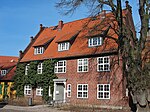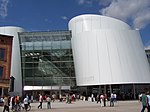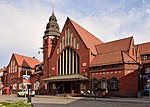Stralsund Museum

The Stralsund Museum (until 2015: Stralsund Museum of Cultural History, Kulturhistorisches Museum) is museum in the Hanseatic city Stralsund, Germany. It is headquartered in a former convent of the Dominicans, the St. Catherine's Monastery. The museum, which was established in 1859 as the Provincial Museum for New Pomerania and Rügen, is the oldest museum of its kind in Mecklenburg-Vorpommern and presents extensive collections of folklore and cultural and art history in the region of Vorpommern. It houses both permanent exhibitions and special exhibitions on changing subject areas. The permanent exhibitions are dedicated to the prehistory and early history of the region as well as the history of the city. Special exhibitions are mainly concerned with Fine Arts.
Excerpt from the Wikipedia article Stralsund Museum (License: CC BY-SA 3.0, Authors, Images).Stralsund Museum
Mönchstraße,
Geographical coordinates (GPS) Address Nearby Places Show on map
Geographical coordinates (GPS)
| Latitude | Longitude |
|---|---|
| N 54.3126 ° | E 13.0879 ° |
Address
Mönchstraße 25
18439 , Altstadt
Mecklenburg-Vorpommern, Germany
Open on Google Maps










